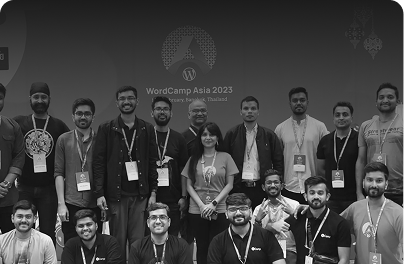Upgrades, maintenance, and support: How WordPress and HubSpot compare
When evaluating HubSpot vs WordPress for upgrades, support, and maintenance, it looks pretty simple. On the surface, a proprietary SaaS like HubSpot CMS promises simplicity: automatic updates, centralized support, and minimal technical overhead. By contrast, an open-source CMS like WordPress might appear to require more hands-on work.
But dig deeper, and it’s not really so. For any team running complex, high-traffic sites (with custom integrations, unique workflows, or hybrid architectures) the real questions are: Who controls your upgrade path? Who owns your support relationships? And who decides how maintenance aligns with your wider stack and roadmap?
This chapter breaks that down:
- How upgrades really work: for standard vs. customized HubSpot instances and for deeply tailored WordPress sites.
- How support shifts from “one-size-fits-all” SaaS help desks to enterprise-grade partners, specialized agencies, and premium managed hosting.
- And how maintenance (from security patching to performance monitoring) becomes either a locked vendor dependency or an open, flexible part of your digital operations.
For teams weighing the total picture, these differences shape more than just your technical workload: they define your long-term cost, agility, and freedom. Let’s look at upgrades first.
Upgrades: Automatic, managed upgrades vs complete update control
When you choose HubSpot’s CMS, upgrades are simple: you don’t really do upgrades. The whole platform is SaaS. HubSpot handles the upgrades.
On paper, this “always up to date” promise is a major draw for marketing teams that want to move fast.
However, the hidden nuance is when you’ve heavily customized your HubSpot CMS.
If you’ve built complex custom modules, rely on niche third-party apps, or have deep integrations with other backend systems, a platform upgrade or API change can still break things. Because you don’t control the underlying core, your team must adapt to HubSpot’s update cycle, on the vendor’s timeline, not yours. In some cases, teams end up maintaining additional middleware to protect custom workflows from breaking with sudden changes.
With WordPress, upgrades are a different story.
Major WordPress core upgrades don’t resemble the huge replatforming initiatives that enterprise teams often endure with proprietary systems like Sitecore. The core is designed for backward compatibility, so you control when you apply updates.
If your stack is well-architected, upgrades can be safely planned, tested, and deployed without any surprises. Managed enterprise hosts like WordPress VIP even support testing core releases against your site in staging first, minimizing risk for mission-critical deployments.
For advanced security or performance features, your teams can also roll out custom improvements on their own timeline, without waiting for a vendor’s roadmap to deliver a patch.
Maintenance: Low-touch upkeep vs customizable maintenance plans
Daily maintenance on HubSpot is minimal. But when you move outside HubSpot’s defaults (by adding custom scripts, middleware, or external services, for instance), your team does pick up maintenance responsibility, which can be quite resource intensive depending on your setup. You’ll likely have to partner with a dedicated HubSpot partner agency in most cases.
With WordPress, routine maintenance is more hands-on. But you choose how to handle it. Managed hosts like WordPress VIP cover infrastructure, backups, and global performance. Your WordPress agency can do this for you. Or, you can also hire or upskill in-house developers. Since WordPress is ubiquitous, quality talent is quite accessible.
Crucially, you aren’t limited to one vendor’s ops team. If you’re scaling globally, integrating new tools, or evolving your site’s functionality, you can flex your maintenance workflows as needed, using automation pipelines, CI/CD, and infrastructure as code practices if your team prefers.
Support: One vendor’s help desk & premium agencies vs a flexible support ecosystem
With HubSpot, if you’re on the Enterprise plan, you get enterprise-level support.
But as soon as your setup gets more sophisticated (say, custom HubL modules, deep API integrations, or workarounds for limitations) HubSpot’s internal support can’t (naturally!) cover you. They can’t always help debug your custom scripts or third-party middleware. Specialized HubSpot partners can fill this gap, but you’ll pay a premium for their niche expertise.
WordPress, meanwhile, gives you real choice in how you secure support. A serious enterprise-grade managed host like WordPress VIP, Pantheon, or Pagely delivers SLA-backed support that rivals any SaaS: think 24/7 monitoring, performance tuning, security patching, and clear escalation paths, all backed by WordPress experts.
Beyond hosting, you’re free to bring in trusted agency partners, independent WordPress specialists, or even in-house teams to handle custom development, training, or tier-two escalations. You’re not tied to a single vendor’s support contract or price tag. And because the codebase is open, there’s nothing stopping your support partner from going as deep as needed, backend, frontend, infrastructure, or integrations.
In short, WordPress at enterprise scale isn’t the “DIY, figure it out alone” scenario critics imagine, when you choose the right hosts and partners, you get best-in-class support and full ownership. That’s why governments, publishers, and global brands trust it to run sites where failure isn’t an option.
Upgrades, maintenance, and support: The final take
If you’re a small or midsize marketing-led team with standard needs and limited in-house tech support, HubSpot’s bundled upgrades, support, and maintenance can feel refreshingly simple. But that simplicity comes at the cost of flexibility, the moment you need to go beyond HubSpot’s predefined playbook, you’re stuck balancing vendor constraints, specialized talent, and hidden integration overheads.
With WordPress, you tend to own more of the responsibility, but you also own the freedom. You decide when and how to upgrade, who supports you, and how much you automate or customize. You’re not boxed into a vendor’s roadmap or locked into a single way of working.
For enterprises serious about building resilient, future-ready digital platforms, especially those with unique architectures, tight compliance demands, or complex integrations, WordPress consistently wins in the long-term here.







